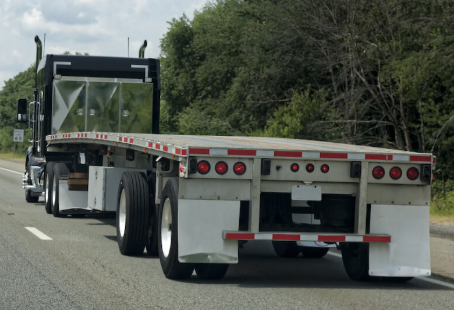Freight Rates Remain Weak for Carriers, But Appear to be Stabilizing

FTR Trucking Conditions Index Improves Significantly in June, But Still Negative
FTR’s revised Trucking
Conditions Index (TCI) showed a significant improvement in June but remained in
slightly negative territory at a reading of -0.82. Strengthening freight
demand and lower diesel prices were offset by weak truckload rates and easing
capacity utilization plus some higher financing costs that negatively affected
carriers during the month. FTR’s forecast for the TCI is for it to remain
in low single-digit negative range into 2020, but some positive readings are
possible during 2019.
Details of the revised TCI for June are found in the August
issue of FTR’s Trucking Update, published July
31. The ‘Notes by the Dashboard Light’ section in the current issue explains
how FTR’s July 2019 Freight•cast model update affects key FTR metrics on the
trucking industry, including the TCI. Along with the TCI and ‘Notes by the
Dashboard Light,’ the Trucking Update includes data
and analysis on load volumes, the capacity environment, rates, costs, and the
truck driver situation.
Avery Vise, vice president of trucking, commented,
“Although rates remain weak for carriers, they appear at least to be
stabilizing. Meanwhile, freight demand appears firmer in recent weeks than in
early spring, but the outlook is far from rosy given a softening industrial
sector. Our biggest near-term concern, however, is the potential impact of the
trade war with China on consumer spending and business investment.”
The TCI tracks the changes representing five major conditions
in the U.S. truck market. These conditions are: freight volumes, freight rates,
fleet capacity, fuel price, and financing. The individual metrics are combined
into a single index indicating the industry’s overall health. A positive score
represents good, optimistic conditions. Conversely, a negative score represents
bad, pessimistic conditions. Readings near zero are consistent with a neutral
operating environment, and double-digit readings (up or down) suggest
significant operating changes are likely.
As noted above, FTR in July completed a major update of its
Freight•cast model, including both updated data and enhancements to the methodology.
FTR traditionally has treated the TCI as a contemporaneous assessment of
overall conditions at a point in time, so we have made very few changes to
historical TCI readings. However, given the noticeably different freight volume
and utilization metrics following the model update – especially during 2014
through today – we have restated the TCI back to January 2014. The historical
revisions also reflect a more robust measure of market rates that FTR adopted
in the spring of 2018. Directionally, the old and new TCI are largely
correlated since mid-2016, but the updated TCI shows peak conditions occurring
earlier in 2018 than the prior metric. Moreover, that peak range was not as
strong and was shorter than previously indicated.
Category: Driver Stuff, Featured, General Update, News










